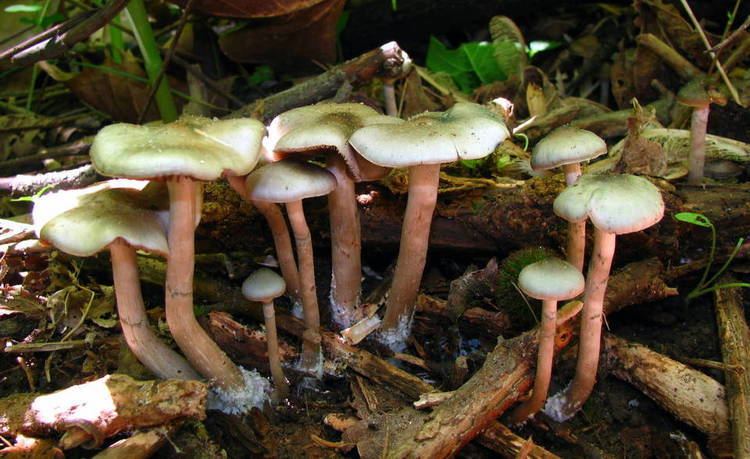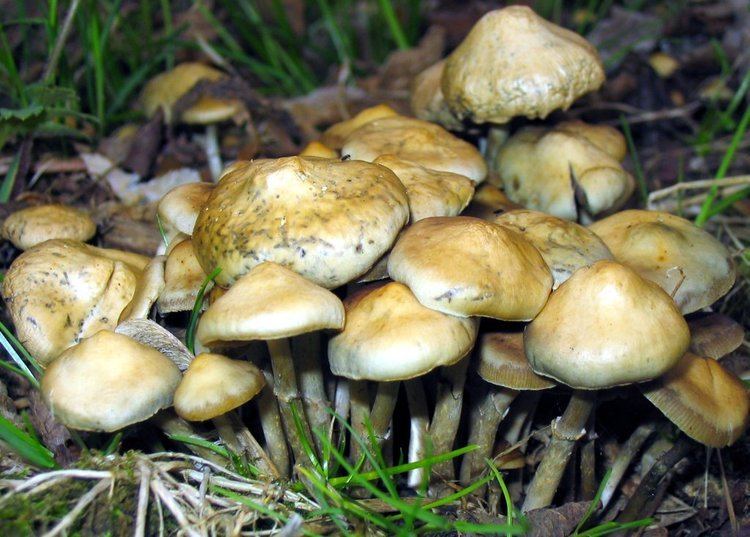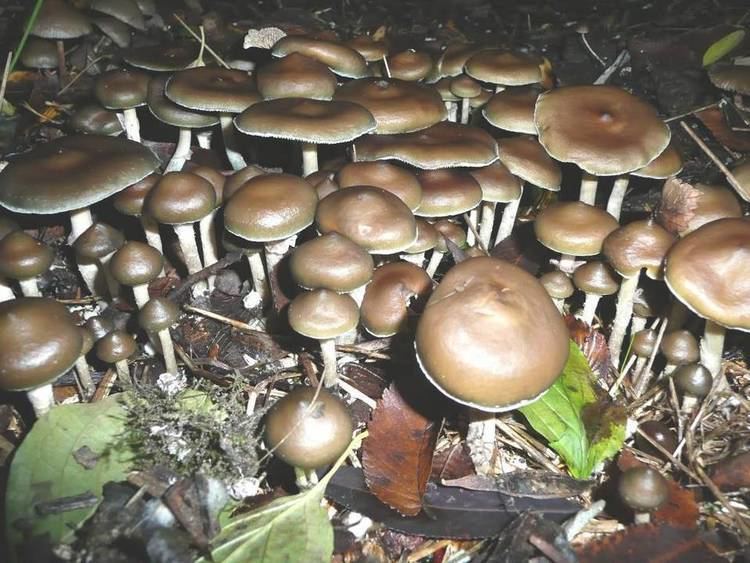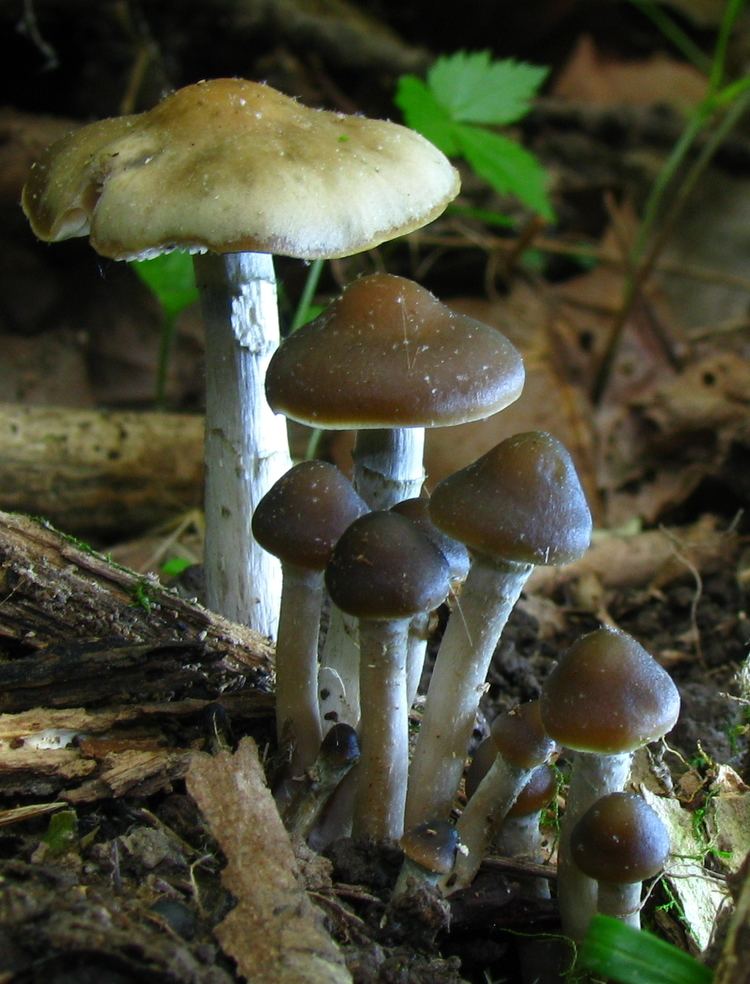Kingdom Fungi Order Agaricales Rank Species | Division Basidiomycota Higher classification Psilocybe | |
 | ||
Scientific name Psilocybe ovoideocystidiata Similar Psilocybe caerulipes, Psilocybe, Gymnopilus luteofolius, Gymnopilus luteus, Gymnopilus aeruginosus | ||
Psilocybe ovoideocystidiata is a psilocybin mushroom in the section Stuntzae, having psilocybin and/or psilocin as main active compounds. It is closely related to P. subaeruginascens from Java, P. septentrionalis from Japan, and P. wayanadensis from India. This mushroom was first documented by Richard V. Gaines in Montgomery County, Pennsylvania in June 2003. Although it is sometimes confused with Psilocybe caerulipes, it can be distinguished by its rhomboid spores, larger stature, earlier fruiting season and membranous annulus.
Contents

Etymology
From the abundant ovoid pleurocystidia and cheilocystidia.
Description

Habitat and formation

Psilocybe ovoideocystidiata is mainly native to the eastern United States, in a range that stretches from Kentucky to Rhode Island, but has been found as far south as Georgia. It is common in the Ohio river valley, here it is often found in the woody debris of overflow areas, along rivers and streams. More generally, it is often found in man-made mulch and wood chips. More recently, it has turned up in the western United States, in the Pacific States from Western Washington to Southern California, though it is still a relatively uncommon species in this region. It has also been reported from Europe, specifically in Switzerland and southern Germany. Seasonality varies a great deal depending on what region they are found in, but in the northeastern US, are most common from April to mid June but they occasionally fruit as late as November.

